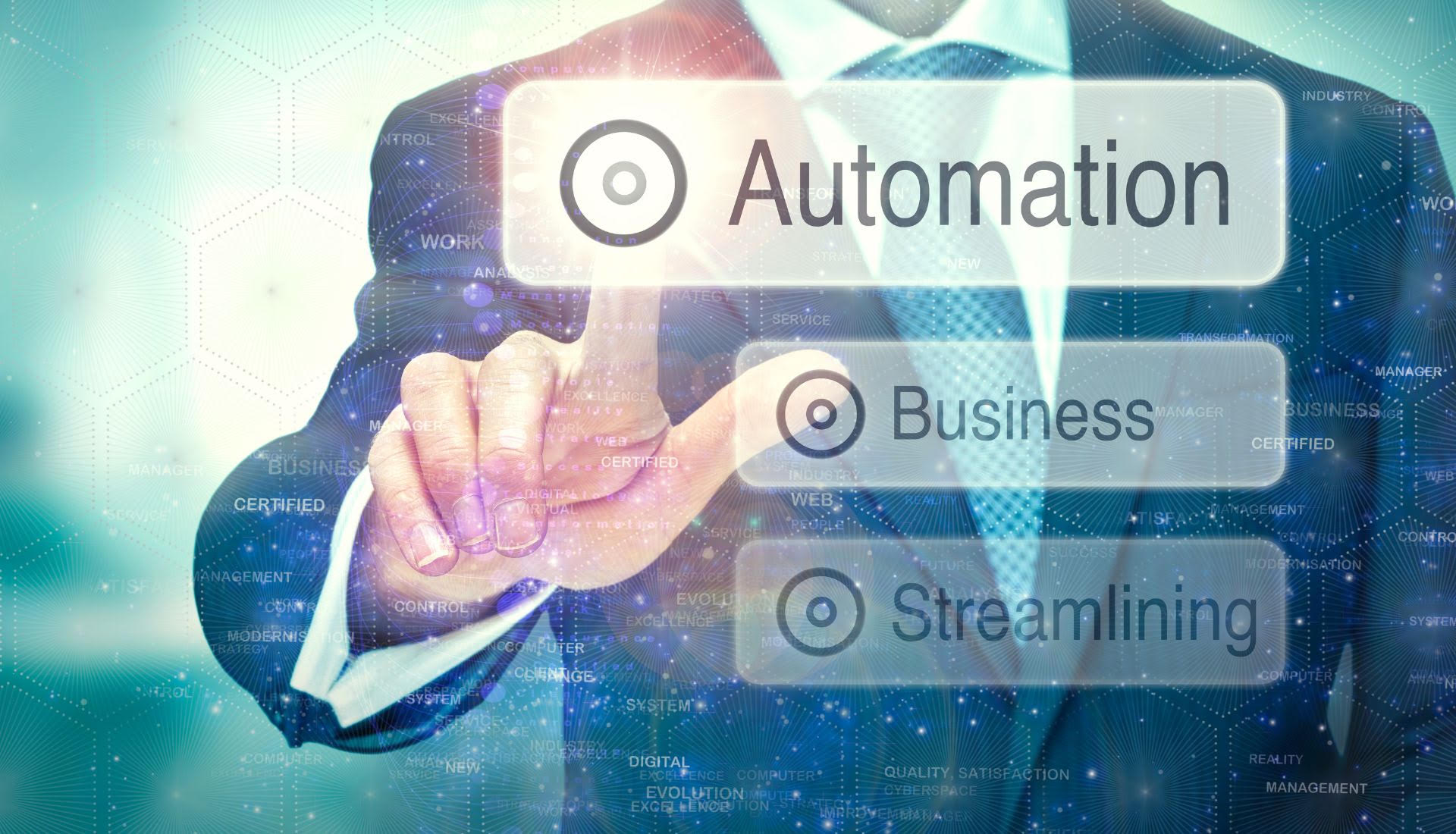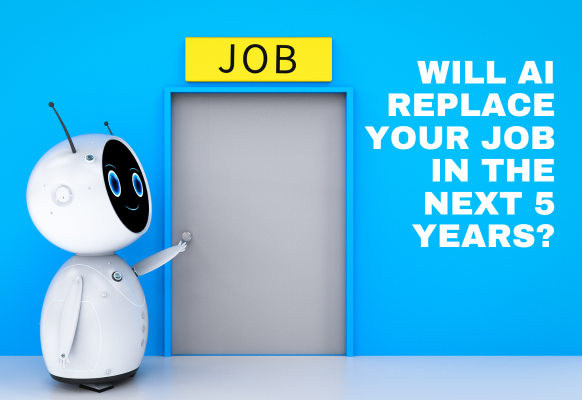A sudden discovery that your employment has vanished during the day would wake you.
Daily technology advancement rates have reached unprecedented levels, enabling machines to learn human activities that previously required manual labour. The workplace future with machines will transform the way we understand work-based employment.
Industrial job loss occurs through automation, which takes over man-made positions across numerous sectors by using automated self-checkout systems and AI-driven customer service teams.
Your work has to prove its survival through the upcoming 5 years.
Employment security has disappeared because companies are continuously looking for ways to speed up operations and achieve reduced costs and increased efficiency.
Industrial job transformation has occurred rather than normal change.
But there’s still hope. To survive the impending changes, you need to identify the AI Replace Your Job and use appropriate adaptational strategies.
You will learn about vulnerable professionals along with affected industries in this piece, which also shows you ways to remain competitive amidst market transformation.
Table of Contents
- Understanding Job Automation
- Jobs Most Likely to be Replaced
- Industries That Will Lose the Most Jobs
- How to Keep Your Job Safe
- Jobs That Are Safe from Automation
- The Impact of Automation on Humans
- Final Thoughts
1. Understanding Job Automation
1.1 What is Job Automation?
The use of technology to handle procedures which were formerly completed by human workers defines job automation. Artificial intelligence, robotics, and software systems capable of processing data and making decisions constitute artificial job automation methods. The modernization of business techniques strongly depends on automation technology, which enhances industry efficiency and decreases operational costs.
1.2 Why Are Machines Replacing Workers?
Several factors contribute to job automation, including:
- Cost Reduction: Company budgets benefit from automated procedures which eliminate repeated work tasks.
- Efficiency: Technological machines operate at accelerated speeds without requiring any resting periods.
- Technological Advancements: AI systems,, together with robotic technologies, evolve at a rapid pace, thereby making automation more practical.
- Consumer Preferences: The need for quick and precise customer services drives companies toward implementing automated solutions because consumers strongly prefer these capabilities. The expansion of automated technologies should increase substantially because businesses want to achieve higher profit margins together with simplified operations.
2. Jobs Most Likely to be Replaced
2.1 Data Entry Clerks
Deliveries of data entry tasks are suitable for automated processing, which AI performs efficiently. Modern data processing programs eliminate human employment in clerical positions. Businesses manage huge datasets through AI-based systems, which results in precise and fast analysis and sorting operations.
2.2 Calls Made by Robots
Chatbots, alongside automated calling technology, duplicate telemarketer functions, which eliminates the requirement for human personnel during sales calls. The systems employ customer behaviour analysis together with personalized dialogues while processing many calls concurrently, which yields better results than standard telemarketing efforts.
2.3 Cashiers
Retail stores need fewer cashiers because they now implement self-checkout systems together with electronic payment options. The expanding popularity of contactless payment, together with online shopping technologies, has led to the disappearance of traditional cashiers from retail operations.
2.4 Factory and Warehouse Workers
Manufacturing facilities, together with warehouses, utilize robots to execute time-consuming tasks that drive down human labour requirements. Automated manufacturing equipment which incorporates robotic arms performs assembly operations and packaging processes and material delivery better and more efficiently than human labour.
2.5 Digital Banking is Taking Over
Online banking platforms, together with mobile application services, have eliminated the necessity of face-to-face bank visits, thereby decreasing the need for bank tellers. Digital banking solutions, including ATMs, chatbots, and digital financial services, now offer remote access, which removes the requirements for human staff to complete financial transactions.
2.6 Customer Service Representatives
AI chatbots and virtual assistants operate as customer support agents to decrease the requirement for human customer support personnel. Automated customer support can operate nonstop to answer each inquiry faster and definitely better than human representatives.
2.7 Online Shopping is the Future
Online shopping systems supported by automated checkout processes now reduce the workforce requirements for store-based sales staff. Virtual assistants, along with online shopping trends, lead customers toward their purchases, which eliminates the need for sales professionals in stores.
2.8 Fast Food Workers
The implementation of self-order kiosks together with robotic kitchen assistants makes fast-food operations more efficient, which decreases the need for human workers. AI systems are equipped to prepare food and cook meals, as well as package them. They offer fast-food chains both precise and efficient ways to serve their customers.
2.9 Travel Agents
Travel agents find less demand because booking platforms combined with AI-based travel planners enable self-booking. Travellers prefer solely digital travel recommendations and instant bookings as well as price comparisons over the traditional service of human travel consultants.
2.10 Taxi and Delivery Drivers
New technology has displaced the role of drivers in two ways: by developing self-driving cars to operate transport services and by developing drone delivery platforms for logistics delivery. Since various locations worldwide have begun utilizing autonomous vehicle tests, this seeks to transform both logistics and mobility businesses.
3. Industries That Will Lose the Most Jobs
3.1 Retail
The retail business faces major changes because of automated checkouts and the growing e-commerce sector. Traditional retail operations experience significant changes because customers show a higher interest in online shopping while demanding AI-based customer experiences.
3.2 Manufacturing
Industrial robots now function on assembly lines while handling all types of manufacturing operations. Production facility automation enables speedy, accurate, and secure operations, which diminishes the need for human workers.
3.3 Customer Support
AI-driven automated chatbots maintain human interactions concerning customer queries to decrease the necessity of human labour intervention. Numerous organizations implement AI-based customer service approaches to supply effortless solutions through more effective processes.
3.4 Finance and Banking
Robo-advisors and online banking systems now control financial consulting services and banking transactions. Electronic payment methods and blockchain systems are speeding up the automation process that affects the financial sector.
3.5 Transport & Delivery
The combination of driverless trucks with smart delivery systems and automated warehouses has transformed the process of goods transportation between locations. Companies now substitute human labour with machines to deliver faster services and minimize expenses while reducing delivery time spans. In the coming years, trucks will automatically drive on highways, and packages will fly through air drones to deliver to customers, while warehouse operations function without substantial human intervention.
4. How to Keep Your Job Safe
4.1 Learning New Skills
Success requires employees to develop professional skills which enable them to remain competitive at work. Acquiring knowledge of upcoming technological developments enables workers to handle changes in employment requirements.
4.2 Move into Tech-Related Jobs
Professionals can create new career paths through education in coding and both data analysis and Artificial Intelligence-related skills. Expert professionals need to evaluate career options in cybersecurity AI development and digital marketing fields.
4.3 Take Advantage of Training Programs
Establishments, including business enterprises, together with educational institutions, provide formal learning sessions which facilitate professional job transitions. The growth of technology requires one to invest in ongoing education in order to sustain one’s professional career.
4.4 Focusing on Creativity and Problem-Solving Skills
Jobs that depend on human creativity, critical thinking ability, and emotional intelligence operate at lower risk of automation. Leadership abilities alongside adaptability will continue to hold great worth in future workers due to their essential nature.
5. Jobs That Are Safe from Automation
5.1 Healthcare Professionals
AI lacks the ability to deliver human interaction along with the medical expertise that doctors nurses and all other medical professionals need. The healthcare industry heavily depends on emotional intelligence from staff members who provide patient care.
5.2 Engineers and Technicians
The members of this professional category create automated systems while performing ongoing maintenance work and conducting system repair tasks. Automation technologies need their specialized knowledge to build systems and solve technical problems.
5.3 Teachers and Educators
Automatic control of education processes remains impossible because the field needs teachers who show empathy and exhibit adaptable mentoring capabilities. Student development and education methods require humans to provide continuous guidance.
5.4 Creative Professionals
While imagination, together with originality, stands as a base for artists, designers, and writers, they create work that proves difficult to automate. Creativity, which requires individual human touches, will continue to be sought after by society.
5.5 Skilled Tradespeople
Carpenters, electricians, and plumbers use their physical dexterity and problem-solving abilities to perform manual tasks. The work of these professions requires direct application in physical settings as well as adaptive characteristics, which machines lack the ability to duplicate.
6. The Impact of Automation on Humans
Industrial automation is transforming how people work through rapid advancements, which create simultaneous difficulties and opportunities in workplaces.
6.1 Losing Jobs & Financial Struggles
Repertoire workers performing simple tasks end up losing their employment to automated systems. Financial hardship happens because of this transition requiring people to look for alternative careers.
6.2 Increased Workplace Efficiency
The elimination of certain jobs through automation results in better workplace productivity alongside job loss. Business organizations obtain augmented operational speed while eliminating human mistakes for increased profitability that fuels national economic growth.
6.3 The Need for Continuous Learning
Employers must pursue ongoing education because established work paths no longer exist. Workers who want to stay employable need to master fresh capabilities along with technological proficiency and industry knowledge.
6.4 Psychological and Emotional Effects
Adaptation problems alongside job loss each cause significant emotional distress, which creates future uncertainty. Actively acquiring new skills combined with prospecting new possibilities enables workers to advance their careers as well as enhance their job security.
6.5 Creation of New Job Roles
Jobs that disappear from the market pave the way for fresh employment options. The labour market continues to demand professionals in artificial intelligence, robotics, cybersecurity, and digital marketing. Workers who choose fields related to these industries earn better salaries as they gain secure positions.
How people and businesses adapt determines the outcome of unavoidable automation in the workplace. The combination of change readiness and technological adoption and human-centered capabilities will decide which workers will succeed in the workforce of the future.
7. Final Thoughts
Technological advances are changing the workforce as various roles will lose their positions over the next few years. Workers who want to maintain their professional values should expand their skill set by embracing technological developments and developing creativity alongside problem-solving abilities. An individual’s job security depends on their willingness to learn new skills and their ability to accept emerging changes.
